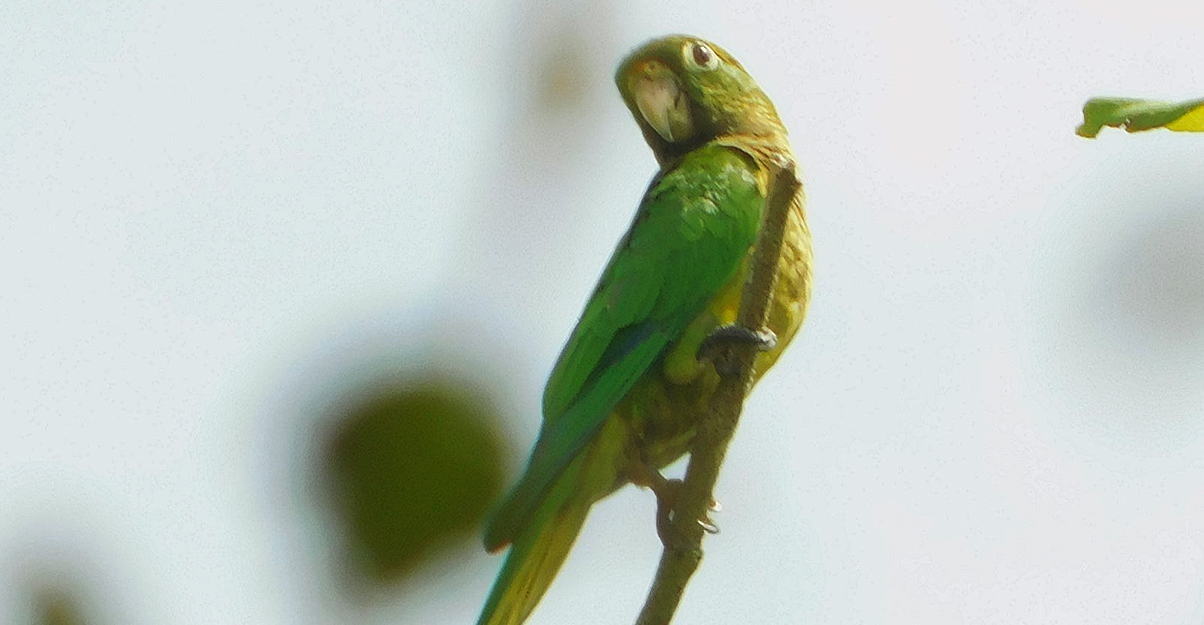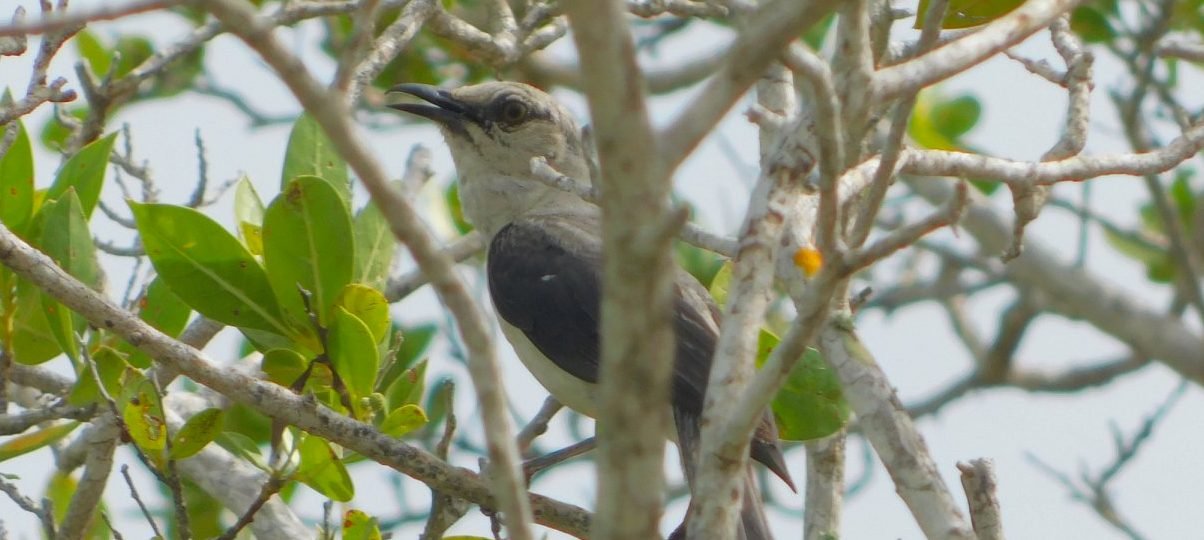As part of the Festival de Aves (Bird Festival) Toh 2018, last Sunday July 15, Co’ox Mayab organized an ecotour to the beautiful Ejido San Crisanto, where we ventured in the search of the birds of the coast, a trip that combined alternative tourism and birdwatching. We made a tour through the mangroves to visit the “ojo de agua” (waterhole), we went through
three different spots to watch some birds and finally we had time to rest and enjoy the beach.
We started very early, at 5 a.m., with nine adventurers on board we departed from Merida to San Crisanto. On the road, the weather was giving us signals that it wasn´t going to be a good day to do birding, a dense fog was present all the way to Telchac Puerto. However, a sunrise with a bright sun and clear skies surprised us upon our arrival in San Crisanto.
Tour through the saltworks
When we stepped out of the van, a couple of killdeers (Charadrius vociferous) welcomed us at the saltworks. But before watching more birds, we took a snack break to have energy for the walks. After the snack break, we made an introduction to what we’d do next: a brief explanation about how to use the binoculars, some instructions to keep the group united and not to
scare birds off… and let’s go!
During our birdwatching through the saltworks we could observe 9 more species such as the lesser nighthawk (Chordeiles acutipennis) who was in its nesting area; the black-necked stilt (Himantopus mexicanus) and the snowy plover (Charadrius nivosus). However, the highlight was to see hundreds of flamingos flying through the skies.
Birds of mangroves
For our second spot to birdwatch, we went to the path that leads to the mangroves, but there wasn´t much bird activity. Nonetheless, this helped us to explain the reason of their absence: most of winter migratory birds start their journey in mid-August. The birds that stood out was the rufous-naped wood rail (Aramides albiventris).
The clock showed 10 a.m., it was time for breakfast. We ate in the facilities of the ejido and went afterwards on the tour through the mangroves. On the way we were accompanied by a flock of olive-throated parakeets (Eupsittula nana) until arriving at the “ojo de agua” (waterhole), where some of us decided to take a refreshing dip and others preferred to
rest and observe the landscape.

On the way back we had the chance to observe between the mangroves a couple of plain chachalacas (Ortalis vetula) and outside the channel we could watch and photograph the rufous-naped wood rail again, as well as register one of the few vireos residing in the state, the mangrove vireo (Vireo pallens).
Resting and birding on the beach
Before lunch, a free hour was given to relax and refresh on the beach administered by the ejido to combat the heat of Yucatan.
In this area, the brown pelican (Pelecanus occidentalis), the magnificent frigatebird (Fregata maginificens) and the turkey vulture (Cathartes Aura) were spotted. Lunch took place in the restaurant “El Angelito” in Telchac Puerto and in spite of some setbacks everything went well.
On the way back to Mérida, we stopped at the last spot of the day, located on the Gulf Coast Highway, on the exit of Telchac Puerto. There we had the chance to observe seven more species like the tricolored heron (Egretta tricolor), the American white pelican (Pelecanus erythrorhynchos) and the royal tern (Thalasseus maximus). Finally, at 5:30 p.m. we were back in the city of Merida. Despite only having seen 33 bird species, the participants were happy and thankful for the experience during the trip.
We thank them for their support and enthusiastic participation in the ecotouristic tours of the Festival de Aves (Bird Festival) Toh 2018, in which we aim to contribute to local development, as well as to the valuation and conservation of Yucatan’s broad bird diversity.
We look forward to seeing you on August 12 to go on our ecotour to the port of San Felipe and observe more birds of the coast in a tour through the ría to the “ojo de agua” (waterhole) Kambulnah and to Isla Cerritos. Until then!
Written by: Eyder Pacab Cox —– Traslation by: Jan Martín Müller




